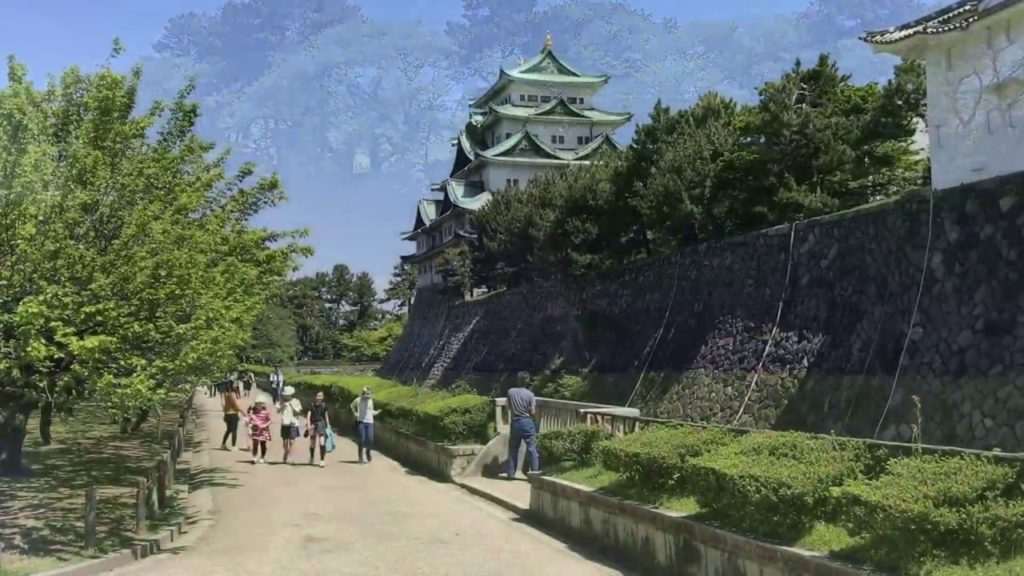Nagoya Castle was built in the beginning of the Edo Period as the seat of one of the three branches of the ruling Tokugawa family, the Owari branch. As such, it was one of the largest castles in the country, and the castle town around it ultimately grew to become Japan’s fourth largest city.
Most castle buildings were destroyed in the air raids of 1945, including the castle keep and the palace buildings. The current ferro-concrete reconstruction of the castle keep dates from 1959 and contains a modern museum with exhibits about the castle’s history. The park surrounding the castle keep features two circles of moats and impressive walls with corner turrets. It becomes an attractive hanami spot during the cherry blossom season which usually peaks in late March or early April. Nagoya Castle was constructed on the orders of Ieyasu TOKUGAWA in order to secure an important position on the Tokaido road and to ward off attacks from the direction of Osaka. Construction was completed in 1612, and the castle is typical of those built on flatlands. Until the Meiji Restoration, Nagoya Castle flourished as the castle in which the Owari lineage of the Tokugawa family, the foremost of the family’s three lineages, resided.
In May 1945, during the air raids on Nagoya in the Second World War, most of the buildings including the main and small donjons, and the Hommaru Palace, were burned down. Fortunately, however, three corner towers, three gates, and most of the paintings on the sliding doors and walls in the Hommaru Palace survived the fire, and have been handed down as Important Cultural Assets. The best-known items associated with the Nagoya Castle are the golden dolphins, or kinshachi. It is said that the first dolphins (shachi) to adorn the main ridge of castle roofs, added when the basic construction of the castle was completed, appeared in the Muromachi Era (1334-1400) as symbol of the feudal lord’s authority.
Although Nagoya’s golden dolphins shared the fate of the dungeon, being consumed by flames in the Second World War, they reappeared along with a rebuilt dungeon, in 1959, to the delight of the people of Nagoya.


AloJapan.com